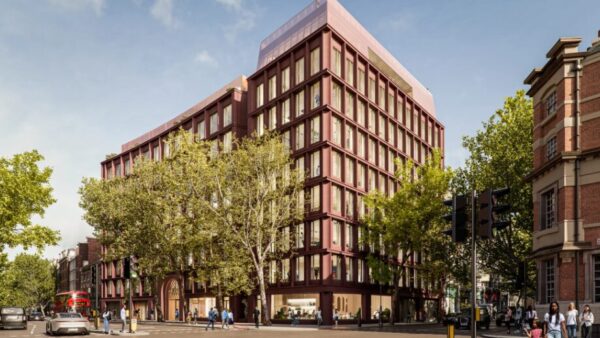
UK housing’s outlook continues to look gloomy with demand far outstripping supply. But Laing O’Rourke, Willmott Dixon, Kier and Carillion have shown how creative thinking can go some way to solving the problem. Stephen Cousins reports.
Increasing the supply of new housing is one of the biggest challenges faced by government. The latest estimates of housing demand show that we should be building 243,000 new homes a year in the UK up to 2031 (according to the Cambridge Centre for Housing and Planning Research). Despite rising sales on the back of the Help to Buy scheme, the industry is only delivering little more than half that number – just 125,000 homes were completed in 2012.
The Cambridge target joins a long list of aspirations, plans and pledges that the current system has failed to deliver. In 2004, economist Kate Barker said we should be building 260,000 a year to improve affordability and access to the market, while the Town and Country Planning Association suggests 240,000 and Home Builders Federation 320,000.
The current imbalance in supply and demand is driving property values to unsustainable levels, particularly in London where the average cost of a home rose by £63,000 in 2013 to £458,000, according to the Office of National Statistics.
The result is that home ownership is now in decline after a century of growth, the number of people in need of affordable and social housing has grown, and younger people are increasingly being forced to live with their parents.
But a survey of house builders published in June by estate agent Knight Frank found that just 6% believe that, under current market conditions, it is possible to meet the Labour party’s relatively modest ambition to build 200,000 homes on a regular annual basis. Three-quarters thought annual output below 180,000 was more realistic.

As can be seen from the graph of quarterly output above, private house building peaked at around 225,000 a year, while council house building has all but disappeared in the last three decades. While developers have recently stepped up their activity it seems extremely unlikely that a private sector that prioritises its profit-margin-per-property will be able to plug the housing hole left by the low levels of direct government grant to the social sector.
With the traditional supply model under-delivering, thoughts are turning to new models to fund and deliver housing. Contractors, house builders and developers are working with councils, private investors and other partners to create innovative new finance and development models designed to unlock and deliver schemes for a range of tenures.
Below, CM looks at promising new initiatives from the sector, including the UK’s first entirely privately-funded council housing scheme, in the London Borough of Barking & Dagenham; a swathe of new rented housing triggered by a resurgence of interest from institutional investors; trials of continental-style custom build development; and the UK’s first real estate investment trust for social housing.
But if the industry is to get the graph moving in the right direction, it will need confidence, finance and above all the recognition that the existing model is broken and things need to be done differently.

Solving the housing crisis 1: Rental’s return
Population growth and rising house prices in London and the south are increasing interest in the private rental sector (PRS), which is predicted could make up 20% of the housing stock in the UK by 2021. Figures from the Building Societies Association (see graph below) show that private rented accommodation is steadily growing as a form of housing tenure in England, from 10% in 2001 to 16.5% in 2011.
Loans from institutional investors, as well as council loans, are behind a new PRS company set up by Newham Council, in London, to build 3,000 homes over the next 13 years. Newham has set up Red Door Ventures to enable it to build more homes even though it had reached the limit of its government-imposed borrowing cap under the Housing Revenue Account.

Most of the 3,000 homes will be available at market rent, with a third set at affordable rent. The company’s first development, in Stratford, will feature a five-storey block of 36 two-bed homes designed by Rogers Stirk Harbour + Partners. The offsite-manufactured homes will be delivered as pods and the entire build programme is expected to take just six months.
“The PRS model works in areas where there is bullet-proof rental demand from reasonably affluent people who are either short of deposit requirements or unable to take advantage of Help to Buy, which essentially means London,” says Ben Derbyshire, managing partner at HTA Design, a design consultancy to the housing industry.
However, competition with homes for market sale is sometimes making it difficult for the PRS model to stack up, says Ben de Waal, head of residential at construction consultant Aecom: “PRS presents challenges in terms of the cost of land, labour and materials versus rental yield, especially in London where the sales model far outstrips the rental model. Once you go further out of the capital, to zones three to five it becomes more equal and depending on the location you can get private rental to work very efficiently.”

Newham council’s Red Door Ventures secured private funding for its offsite-manufactured PRS development in Stratford.
But Willmott Dixon is proving that it can make sites in both central and outer London stack up, and attract new institutional investment. Investment manager M&G last year agreed to fund 233 PRS homes, to be built by Willmott Dixon, as part of a 1,176-home regeneration of the Aberfeldy Estate in the London Borough of Tower Hamlets. The 233 homes are due for completion in 2015 and will be managed by be:here, a new company set up by Willmott Dixon which plans to roll out a total 5,000 PRS homes over the next few years.
Be:here has also partnered with a UK local authority pension fund – with the deal brokered by investment management company Invesco – to build 118 PRS units for £32.5m in Hayes, west London. Under the deal the pension fund will purchase the site freehold from be:here and fund the development of the scheme, with be:here managing the units under its brand following completion in 2016.

Solving the housing crisis 2: Custom Build
Custom build is a major sector in some countries on the continent, but currently accounts for less than 4% of the UK market. However, that could change after planning minister Nick Boles launched the Right to Build programme in May, which will create a £150m fund to encourage local councils to prepare up to 10,000 plots, with all the services installed, to sell to custom builders.
“Custom build will definitely have a role to play, there is enormous pent up demand from people wanting to building their own homes.”
Ben Derbyshire, HTA
“Custom build will definitely have a role to play, there is enormous pent up demand from people wanting to building their own homes, but small sites for homes are difficult to come by, so developers, house builders and housing associations are now looking at creating large sites suitable for custom build developments,” says Ben Derbyshire at HTA, which worked with custom build “enabler” Carillion-Igloo to complete the masterplan for a 60-home scheme to be built at Trevenson Park in Pool, Cornwall. The project forms part of a 150-home affordable housing development being funded by the Homes and Communities Agency.
Once the infrastructure is in place, Carillion-Igloo will market the plots separately to customers as well as provide them with a choice of six different home manufacturers, for example, architects teamed up with local builders, to provide customisable houses.
By cutting down the developer’s profit, the homes are expected be around 25% cheaper than the equivalent traditional build. “This model has huge potential, what’s being talked about is ramping up supply to provide up to 100,000 homes a year, based on current demand,” says Derbyshire.
Read related article – Choice offering: a solution to the housing crisis?

Solving the housing crisis 3: Social and affordable housing
Affordable housing development has traditionally been financed through a mixture of grant and cross-subsidy from market housing, but cuts to public funding are forcing the sector to think creatively. A successful example is Laing O’Rourke’s development arm, Explore Investments, which has been working with the London Borough of Barking & Dagenham to pull in private investment to build 477 properties for low income renters without grant or cross-subsidy.
“The council had two empty sites they wanted to develop, but the Homes and Communities Agency (HCA) development framework panel had very little interest, so they came and asked us to assist,” says Andrew Shepherd of Explore Investments.
Shepherd adds: “We put together a model based on seeking funding from a number of big pension funds, which had money but were nervous about banks and other forms of investment.”

To build the Thames View Estate in Barking, Explore investments and Barking council attracted investment from a pension fund
The result is William Street Quarter, located close to Barking town centre and featured in CM June, which includes 201 offsite-manufactured dwellings in three large apartment blocks and several rows of terraced housing. The second site is the Thames View Estate, at the gateway to the Barking Riverside redevelopment, with 151 family homes, 35 duplex flats and 90 one and two-bed flats. Explore subcontracted the building works to London contractor Jerram Falkus and the architect was Pollard Thomas Edwards.
The key feature that makes the deal stack up for Barking & Dagenham is that it is effectively borrowing funds over a longer term than normal – 60 years – and therefore has to be confident that the properties will be rentable at a sustainable level in 2074.
Jeremy Grint, director for regeneration at Barking & Dagenham Council, says: “The trouble is rents tend to fluctuate in relation to inflation making it difficult to predict what will happen, which is why we resolved to properly maintain the properties to a good standard, and we built them in very accessible locations to increase their rentability.”
“We put together a model based on seeking funding from a number of big pension funds, which had money but were nervous about banks and other forms of investment.”
Andrew Shepherd, Explore Investments
Barking & Dagenham will manage and rent the properties, paying Long Harbour Investments – the company managing the pension fund investment – an annual sum equivalent to the cost of borrowing the money, plus interest, over a 60-year period. At the end of the lease, when the development costs have been repaid, full ownership of the properties will transfer to the council.
Three quarters of the properties will be rented at 80% market rent, the rest will be a mixture of homes for people in employment at 60-65% market rent and homes for social housing at 50%.
Another novel method of funding the construction of low income housing without the need for HCA grant is being developed by Kier Homes, which is being used to deliver 152 homes on three sites in Kent. The model involves Kier funding construction of the homes, while the council puts in its land for free and an institutional investor purchases the homes once they are completed.
The investor then leases the homes back to the council or a housing association, which repay it the rent for all tenancies, index linked to inflation, for a lease period of 25-50 years. At the end of the lease, ownership of the land is transferred back to the council or housing association.
“This method has appeal because the council is able to retain long term ownership of the land, and it can be easily replicated across several sites,” says Shelagh Grant, chief executive of the Housing Forum, which examined the process in its recent report, Making a Place For Low Cost Housing. “There are another four sites in Kent due to come through on the same basis,” adds Grant.
Read related article – Quarter masters at Barking scheme

Solving the housing crisis 4: The Reit way to fund housing
Housing funding provider Houses for Homes (HFH) is setting up the UK’s first real estate investment trust (Reit) for social and extra care housing. A Reit is one of the mechanisms suggested by government to harness the billions of pounds sitting in pension funds and use it to finance social housing. In the UK, Reits have to distribute 90% of their income to investors and they must be UK resident and publicly listed on a stock exchange.
Under its model, known as a Transfer Reit (TReit), HFH acts as a middleman, drawing in finance from pension fund investors and offering it to local councils or housing associations wanting to build homes. HFH then manages the development of the homes and holds the completed properties in trust, leasing them to the housing provider client at a fee based on rent level, while guaranteeing its investors a 5.2% annual return. At the end of the lease, the homes are transferred to the client.
HFH’s construction delivery partners currently include contractors Willmott Dixon, Galliford Try, Mansell, Keepmoat and Pochin’s. HFH chief executive Phil Shanks says it is planning to list its TReit on the AIM London Stock Exchange by September this year and says it is nearing closure on two large contracts for an 800-home social housing project in South Yorkshire, and three 100-bed extra care developments at an undisclosed location.
“The major difficulty with Reits is getting housing built, because pension funds typically look to limit their risk by backing schemes that are already in existence, and settled under management with a mature rent roll, it’s something we have been wrestling with for two years,” says Shanks. “Ultimately, we were able to attract high-net-worth investors who are prepared to expose themselves to well-managed development risk, and who are comfortable that our equity requirements are being met. This gave us the confidence to develop a pipeline to supply housing to housing associations and local authorities.”
Most of the homes will be let at sub-market rent, so the focus during construction is on maximising value for money, he adds: “That means planning developments in a way that helps the builders keep their costs down, and implementing fixed-price contracts with contractors.”
Comments
Comments are closed.











What about the 5th way?
Encourage renovation and rescue of current uninhibited housing stock. This was done in the 1970’s with the Goverment matching the owner’s expenditure £ for £ up to £10,000 to upgrade and make habitable previously written off housing and was a great success. Increase it now to £50,000 and it will really encourage our younger population to gain a foot on the housing ladder.